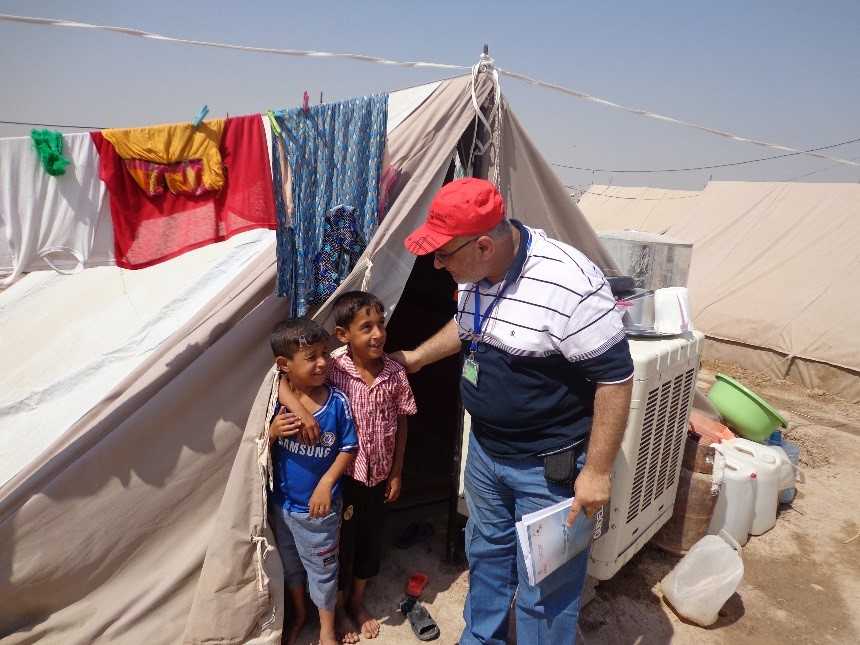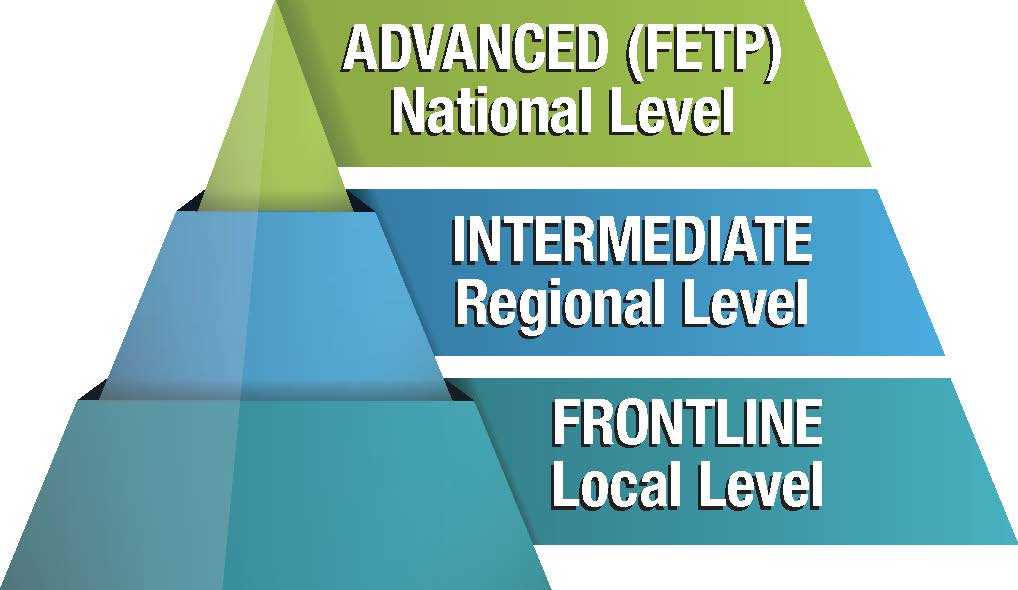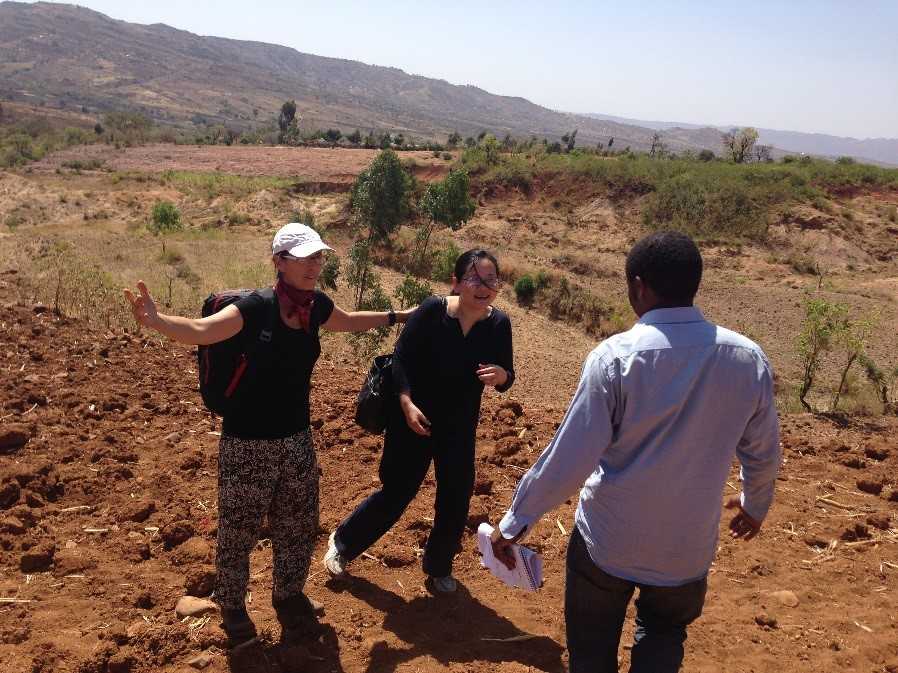Field Epidemiology Training Program: How We Train

FETP Graduate Dr Wesam Shafiq conducts a health assessment in an IDP camp in Diyala Province, Iraq
Learning by Doing
The guiding principle of the Field Epidemiology Training Program is "learning by doing." FETP trainees (also known as residents, fellows, or officers) spend 20-25 percent of their time in the classroom and 75-80 percent in the field.
- Classroom time is spent learning the principles of epidemiology, disease surveillance, outbreak investigation, and biostatistics
- Field placements are spent participating in outbreak investigations, helping to establish and evaluate disease surveillance systems, designing and conducting studies on problems of public health concern, and training other healthcare workers
With a focus on building competency outside of the classroom, our model is distinct from the majority of epidemiology training programs, such as traditional Master of Public Health (MPH) programs.
Personal attention
Another unique feature of FETPs is the relatively small size of the training cohort, which is typically between 10-15 residents. FETP cohorts are kept deliberately small to ensure that each resident receives adequate supervision and mentorship throughout their training. Residents are typically recruited from within ministries of health or occasionally from other ministries, such as agriculture.
Levels of Learning

Our traditional field epidemiology training program is an intensive, two-year course. However, in recognition that different skills are needed at different levels of a country's health system, we developed a three-tiered "pyramid" training model to build capacity at local, district, and national levels. In all trainings, the majority of the participants' time is spent in the field, working on priority public health projects for their country and applying what they have learned in class.
- Advanced: The advanced level, two-year training occurs at the highest levels of government
- Intermediate: The nine-month intermediate level targets district-level public health workers
- Frontline: The three-to-five month basic level targets local health workers
Resident Advisors

Ethiopia FETP Resident Advisor Lucy Boulanger, EIS Officer Ulzi Orshihk Luvsanshara, and FETP Resident Dereje Seyoum investigate a cluster of unexplained deaths in Konso, Ethiopia, 2015.
In most cases, countries lack a sufficient number of experts who can serve as mentors to residents during the first few years of the program. In these situations, we place an expert field epidemiologist and trainer to serve as the “Resident Advisor” until a sufficient number of residents have graduated and are able to serve as mentors and trainers.
The Resident Advisor is usually a graduate of CDC’s Epidemic Intelligence Service or another field epidemiology training program. Their role is to develop and implement the curriculum, ensure the scientific excellence of the training, and supervise the residents.
Support from CDC Headquarters
In addition to Resident Advisors, CDC also supports countries by sending medical officers, epidemiologists and health scientists, public health advisors, and instructional designers who can provide scientific expertise, training consultations, and other programmatic support and advice to help ministries of health implement their FETPs.
CDC develops customized classroom curricula for epidemiology, biostatistics, management, and public health communication skills to be used by the FETPs in country. We also conduct health system assessments in order to target training content, as well as the placement of residents in the field, to best meet the needs of the country or region.
For more information, see our noncommunicable disease training modules and other FETP training resources.
- Page last reviewed: May 2, 2016
- Page last updated: May 2, 2016
- Content source:


 ShareCompartir
ShareCompartir